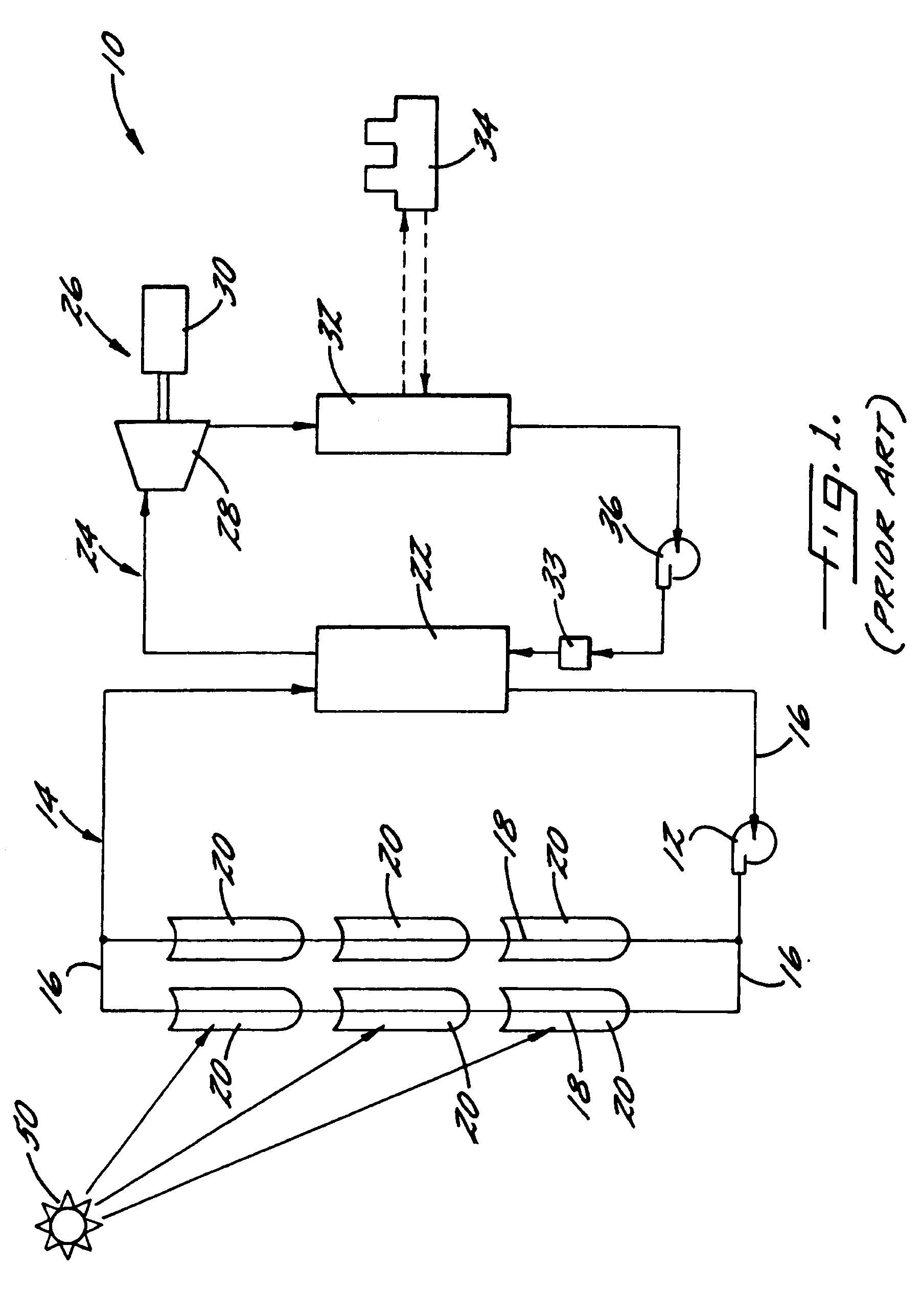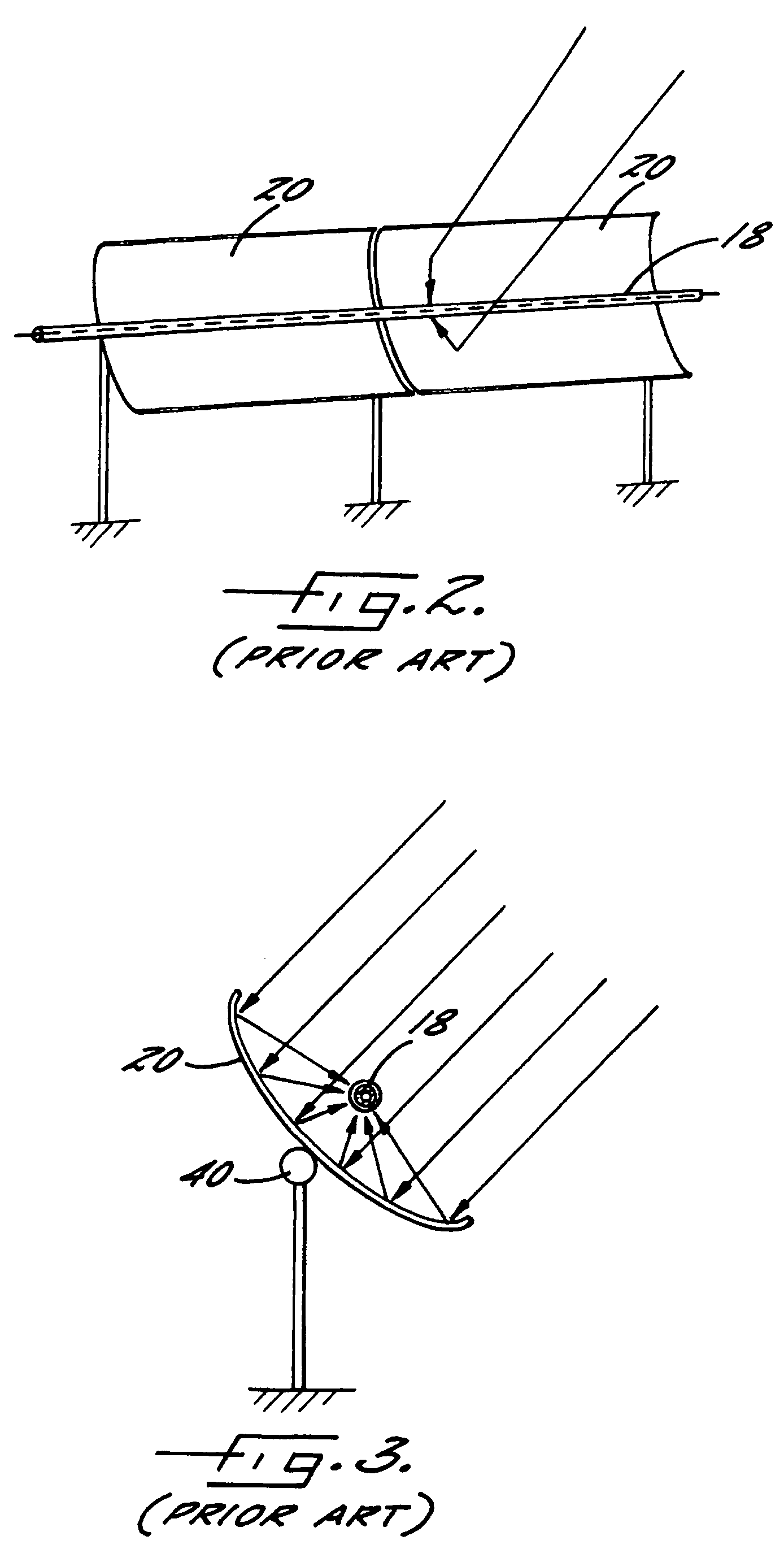Solar collector and method
a solar collector and collector technology, applied in the field of solar collectors, can solve the problems of fluid thawing uniformly in the fluid circuit, the inability of sunlight to be used for heating fluid, and the loss of thermal energy to the cooler ambient environmen
- Summary
- Abstract
- Description
- Claims
- Application Information
AI Technical Summary
Benefits of technology
Problems solved by technology
Method used
Image
Examples
Embodiment Construction
[0033]The present invention now will be described more fully hereinafter with reference to the accompanying drawings, in which some, but not all embodiments of the invention are shown. Indeed, this invention may be embodied in many different forms and should not be construed as limited to the embodiments set forth herein; rather, these embodiments are provided so that this disclosure will satisfy applicable legal requirements. Like numbers refer to like elements throughout.
[0034]Referring now to FIG. 4, there is shown an apparatus 100 for collecting solar energy. The apparatus 100 is structured as a trough-type solar collector, which includes a receiver 102 such as a pipe, tube, or other fluid conduit or vessel that defines a passage 104 for receiving and heating the heat transfer fluid. The apparatus 100 also includes a concave collector mirror 110 with a reflective surface 112 that is directed toward the receiver 102 and configured to reflect solar radiation toward the receiver 10...
PUM
 Login to View More
Login to View More Abstract
Description
Claims
Application Information
 Login to View More
Login to View More - R&D
- Intellectual Property
- Life Sciences
- Materials
- Tech Scout
- Unparalleled Data Quality
- Higher Quality Content
- 60% Fewer Hallucinations
Browse by: Latest US Patents, China's latest patents, Technical Efficacy Thesaurus, Application Domain, Technology Topic, Popular Technical Reports.
© 2025 PatSnap. All rights reserved.Legal|Privacy policy|Modern Slavery Act Transparency Statement|Sitemap|About US| Contact US: help@patsnap.com



